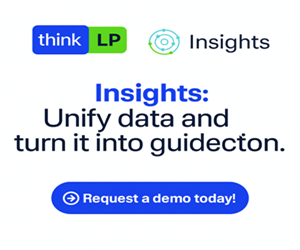Industry Focus
Artificial Intelligence
Use Cases for LP Leaders
Generative artificial intelligence (AI) models can be a valuable tool for retail loss prevention leaders in several ways. By leveraging its capabilities in data analysis, information retrieval, pattern recognition, and natural language processing, generative AI can assist in various aspects of retail loss prevention administration, training, and investigations.
Beginner Generative AI Tips
AI technology, including language models like ChatGPT, rapidly evolves daily. Staying informed about updates and changes to the model can help users understand new features or improvements, enhancing the overall user experience.
Finding the Right Tool
For many of the use case scenarios developed, one AI resource that is used most regularly is Open AI-Chat GPT-4.0 for a monthly fee.
Periodically ask the ChatGPT when its last update was, such as:
Before starting a project, give your AI context on its research role to get the best product such as:
Check if the Chat GPT response to your question is not what you are looking for or you need more detail.
AI has limitations and can give you nonsensical answers or incorrect information, so it’s important to double-check the data it gives you.
Data Analysis and Reporting
Generative AI can quickly analyze large volumes of data, such as transaction records, POS exception reports, customer sentiment, and key performance indicators. It can identify patterns or anomalies that might indicate fraudulent activities, such as repeated unusual transactions or consistent negative feedback about a particular service or product. This can help LP and fraud investigators pinpoint areas of concern that require further investigation. Unusual refund patterns can be identified by analyzing refund transaction data to flag the stores or employees with abnormally high refund rates, which could indicate suspicious behavior. Also, comparing transactional data across locations is a good way of spotting inconsistencies or anomalies in sales data across different store locations to identify potential internal theft or misconduct cases. If you are looking for trend analysis in shortage rates, you can track shortage rates over time to determine whether specific changes (like new policies or staff changes) correlate with increased losses.
Useful AI Tools to Explore for Data Analysis and Reporting
In addition to ChatGPT, IBM Watson Discover is a strong tool for uncovering hidden clues from complex loss prevention documents and data. This tool can process large data sets to identify trends and patterns in sales or LP data to pinpoint potential areas of loss or fraud in stores. Watson Discovery also allows for customizing AI models to suit your specific retail scenarios, enabling more targeted data analysis relevant to loss prevention and fraud detection.
SAS Visual Analytics provides powerful data visualization capabilities, making it easier for retail leadership to understand complex data sets and identify key trends and anomalies. This tool can be used for predictive analytics by analyzing transaction data to predict potential fraud using advanced analytics to identify transactions that deviate from typical patterns. SAS Visual Analytics can integrate data from various sources, including transaction records, customer databases, and apprehension statistics, providing a view of potential issues and opportunities in stores. This is a very big opportunity in the LP industry.
Enhancing Communication
LP leaders often need to communicate complex findings in an understandable way to management, law enforcement, the court system, etc. Generative AI can assist in drafting very clear, concise, and professional reports or presentations, ensuring the key findings are communicated effectively to prosecutors, court officials, and judges. Also, developing clear and direct presentations for retail management and summarizing investigation findings, loss strategies, and recommended actions is critical for C-suite executives who may be preoccupied with other priorities.
Useful AI Tools to Explore for Enhancing Communication
OpenAI’s GPT-4 can be used to draft and edit detailed investigation reports, summarizing complex findings clearly and concisely. It can effectively articulate the nuances of the investigation, ensuring that all key points are communicated effectively to management or other stakeholders by creating presentation materials, such as slides or speaking points, for communicating findings to various audiences.
Grammarly Business is a great tool that can review and refine investigation reports, emails, and other communication documents. It helps correct grammar, enhance clarity, and ensure the tone is appropriate for the intended audience. As investigators draft reports or communications, Grammarly can provide real-time suggestions to improve the quality of writing, making it more effective and professional. To ensure the originality of the content in reports, especially when compiling information from various sources, Grammarly’s plagiarism checker can be a valuable tool.
Microsoft’s Power BI can transform complex data sets into understandable and visually intuitive formats, such as charts and graphs, which can be incorporated into reports and presentations to enhance comprehension. Developing interactive dashboards for presentations that require interactive elements where stakeholders can explore the data themselves, Power BI provides the tools to create dynamic and interactive visualizations. Power BI also allows for the integration of data from various sources, which can be used to create a comprehensive view of the investigation’s findings, aiding in more effective communication.
Training and Administration
Generative AI can create training materials on loss prevention and fraud for new LP staff. It can also help update the company’s current LP policy or procedures based on the latest industry practices and legal requirements, creating comprehensive training modules for staff who are recognizing and reporting suspicious activities. This can be used to assist in updating company policies and procedures based on the latest loss detection methodologies and legal requirements. For LP training, this tool can assist in producing informational content to educate employees about typical fraud schemes and prevention strategies such as posters and infographics.
Useful Tools to Explore for Training and Administration
GPT-4 can be employed to write comprehensive training guides and manuals on various aspects of loss prevention and fraud detection. It can include scenarios, best practices, and response strategies. GPT-4 can also be used to create interactive Q&A sessions or quizzes for training, making the learning process more engaging for store staff.
Articulate 360 specializes in creating e-learning courses. It can be used to develop interactive and multimedia-rich training modules on loss prevention and fraud detection tailored for retail investigators and employees. This tool allows for creating scenario‑based learning experiences that effectively train store teams to recognize and react to various types of retail fraud and theft. Articulate 360 includes features for assessments and feedback, enabling LP trainers to gauge the effectiveness of the training.
Adobe Captivate is ideal for creating video simulations and interactive training content. It can simulate retail environments and fraud detection scenarios, providing hands-on experience in a virtual setting. This tool allows for creating e-learning content adaptable to various devices, making training accessible on different operating platforms.
Social Media and Online Monitoring
Generative AI can aid in monitoring social media and online platforms for mentions of your retail brand, which can sometimes reveal fraud or theft incidents (like the sale of stolen goods or triangulation schemes). Your company’s public relations and marketing departments may already use these tools today. These tools can be helpful in monitoring social media and online marketplaces for signs of stolen merchandise being sold as well as gauging public sentiment toward the brand on social media following a reported theft or fraud incident. It is also helpful in scouring social media for any indications or discussions of planned thefts or frauds targeting the retailer.
Useful Tools to Explore for Social Media and Online Monitoring
Hootsuite Insights offers comprehensive monitoring across social media platforms and online forums for mentions of the retail brand. This tool can analyze the sentiment of posts mentioning the brand, helping to identify adverse trends indicative of underlying issues such as widespread theft or customer dissatisfaction. It can also help in identifying trending topics or sudden spikes in brand mentions, which could be related to security incidents or emerging fraud schemes.
Talkwalker monitors social media and online news for brand mentions, enabling quick detection of potential fraud or theft-related discussions. Talkwalker can also analyze visual content, such as images and videos, for brand logos or products, which is particularly useful in identifying stolen goods advertised or discussed online. Investigators can set up customized alerts for specific keywords, hashtags, or image-based content related to their retail brand, ensuring they are promptly informed of relevant online activity.
Crimson Hexagon offers extensive analytics capabilities, including analyzing historical social media data, which can be invaluable in identifying patterns or trends in fraud or theft related to the retail brand. This tool is excellent in extracting insights from social media conversations, helping to understand the context in which the brand is mentioned, which can indicate fraudulent activities or customer sentiment trends. Like Talkwalker, Crimson Hexagon can analyze multimedia content for visual cues related to the brand, aiding in identifying potentially stolen products showcased online.
MetaData2Go, although not considered AI, is very useful to extract the metadata from any photos of stolen merchandise posted online by a criminal entity. This information may include the date and time the photo was taken, the make and model of the camera used, geographic coordinates, and sometimes the name of the photographer.
Scenario-Specific Research
Investigators can use generative AI to research specific types of retail fraud or theft and emerging trends in retail crime quickly or find case studies and examples of how similar incidents have been handled in the industry. This can provide valuable insights and help in formulating effective investigation strategies by researching the latest methods in retail fraud and how they might be countered. Searching international, federal, and state laws can help apply the proper statute to an investigation and prosecution that you are currently working to develop.
This will help in researching case studies on ORC to understand common modus operandi as well as keeping up with the latest technological advances in loss prevention and their applications in retail.
Useful Tools to Explore for Scenario-Specific Research
OpenAI’s GPT-4 can quickly sift through vast amounts of text data to provide information on specific laws and regulations, both national and international, that pertain to retail fraud and theft. It can help analyze current trends in retail crime by accessing and interpreting the latest research papers, articles, and news reports. GPT-4 can assist in gathering and summarizing relevant case studies and historical examples of retail fraud, providing insights into how similar incidents have been addressed and resolved in the past.
LexisNexis is a powerful tool for legal research, offering access to a comprehensive database of legal resources. It can be used to find specific laws and court cases related to retail fraud and theft. Investigators can use LexisNexis to analyze legal documents and case laws to understand how certain types of retail fraud have been legally addressed. This tool also provides capabilities for conducting risk assessments and due diligence, which can be vital in formulating strategies to prevent or respond to retail fraud.
Legal and Compliance Assistance
Most importantly, generative AI can provide information on relevant laws, regulations, and compliance requirements for retail fraud and loss prevention. While it’s not a substitute for legal advice, it can help investigators stay informed about the legal landscape. Ensuring that your legal and privacy leadership are partnered is critical to avoiding problems in this rapidly growing space.
Generative AI is proficient in understanding and generating human-like text, making it useful for various applications such as answering questions, providing explanations, generating text, and more. It’s built to understand context and follow a conversation flow, which allows for more engaging and coherent interactions.
It’s crucial, however, to recognize the limitations of the model. For instance, generative AI doesn’t have real-time internet access or the ability to browse current data, so its knowledge is limited to what it was trained on (up to its last training cut-off, usually a specific date). It also doesn’t have personal experiences or emotions and can sometimes generate incorrect or nonsensical responses. Understanding these limitations is critical to setting realistic expectations and using the tool effectively.
It’s also essential to use generative AI ethically. This means avoiding using it for deceptive purposes (like passing off AI-generated text as human without disclosure), using it to generate harmful or inappropriate content, or relying on it for advice in critical situations.
When interacting with generative AI, be mindful of privacy. Avoid sharing sensitive personal information, confidential data, or anything you wouldn’t want potentially seen by others. While AI works to ensure confidentiality and data security, it’s always prudent to be cautious with personal information.
Look into compliance requirements for anti-fraud measures in retail, such as Know Your Customer (KYC) and Anti-Money Laundering (AML) regulations.
Also be sure to explain legal considerations around monitoring employee activities, ensuring LP leaders adhere to legal standards.
Generative AI can be an invaluable asset for retail leaders, enhancing their capabilities in data analysis, reporting, communication, training, legal compliance, customer service analysis, and more. Its versatility and ability to quickly process large amounts of information make it a powerful tool in the fight against retail loss. However, it’s important to remember that while AI can provide support and insights, the expertise and judgment of professional investigators are crucial in interpreting the data and making informed decisions. Integrating AI tools like ChatGPT should complement, not replace, the nuanced understanding and hard-earned experience of human loss prevention leaders.
John Matas CFE, CFCI, is a retail industry consultant with over 30 years of experience in omni-commerce fraud, financial crimes, asset protection, and investigations. John was the VP of investigations, fraud, and ORC for Macy’s for over 25 years. Most recently, John served as the global head of risk and fraud for Etsy Inc. where he was responsible for the organization’s fraud strategy and framework. John is on the Editorial Board for Loss Prevention Magazine and is a regular speaker for the NRF, RILA, International Association of Financial Crimes Investigators Merchant Risk Council, and Association of Certified Fraud Examiners. John graduated from Kean University with a BA in both Political Science and Criminal Justice and is currently studying Applied Machine Learning at Columbia University.






